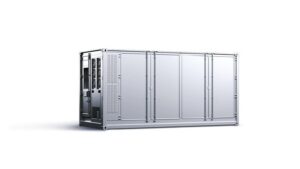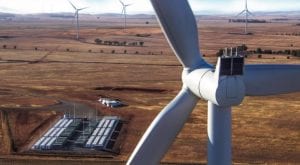South Australia has ushered in a brave new world for rooftop solar, with the introduction of new rules that require strict new inverter standards and households to nominate an “agent” that will be empowered to switch off their solar if asked to by the market operator.
The new rules – dubbed the “Smarter Homes” – will revolutionise the way distributed energy resources interact with the grid in South Australia, and across the country, and just so happen to come into force on the fourth anniversary of the state’s “system black” state-wide blackout in 2016.
The new standards aim to ensure new rooftop solar installations have the ability to “ride through” system faults, can be subject to changing export limits, and can be disconnected from the grid if needed. Similar rules will be introduced in Western Australia, and then throughout the main grid.
To meet this goal, all rooftop solar systems installed in the state from today must choose from a list of government-approved, compliant inverters (see here) and system owners must have appointed a “relevant agent” (listed here) which is approved to control these inverters, if need be.
It is the most significant new development for rooftop solar, which in just a few years has grown from a niche technology that nibbled at the earnings of the big coal generators, to a phenomenon that will come to dominate the grid in future years as the market shift from a centralised grid to a distributed one.
Which means that while the standards currently apply only in South Australia, one version or another of the same rules will inevitably be extended to the rest of the National Electricity Market, and the W.A. grid, sooner rather than later, via the Australian Energy Market Operator.
AEMO has long planned a “roadmap” to introduce new standards, new technology and new protocols to enable it to manage this growing resource around the country.
But South Australia’s booming uptake of rooftop solar – and the fear that the “zero demand” benchmark may be reached before a new interconnector to NSW is built by around 2023 – has forced it and the state government to fast-track their response.
Just last month, AEMO described the grid-wide need for new powers to control rooftop solar as “urgent.”
In a draft interim standard published in late August, the market operator noted that up to 40% of rooftop solar systems could suddenly disconnect if inverters were not able to ride through system faults. In S.A., that amounts to 500MW, and counting, of capacity that could suddenly be lost – a major threat to the system in such a small grid.
As noted above, the new inverter standards coincide with the anniversary of South Australia’s infamous “system black” event of four years ago, a state-wide black-out caused when freak storms flattened powerlines and triggered a series of catastrophic system and generator faults.
That system black had nothing to do with rooftop solar – and as AEMO noted after the event, was not about large-scale renewables, either – but it drove home the need for a “smarter” and more agile grid, and for AEMO to better understand the characteristics of the resources at its disposal.
In South Australia, the rooftop solar resource is the number one priority, as it hurtles towards becoming the first gigawatt-scale grid in the world where the growing amount of rooftop solar effectively eliminates grid demand. It is believed that up 4,000 new systems are being added each month.
South Australia’s decision, to go it alone and in quite a rush, has not pleased everyone, of course. Solar industry bodies have lamented the lack of notice and warned that the swift rule change could leave retailers and installers saddled with millions of dollars-worth of redundant stock. Others have suggested that over regulation is killing innovation.
But the government is forging ahead. South Australia’s energy minister Dan van Holst Pellekaan has argued that tougher measures are preferable to putting a stop to new installations. The government says it believes it can double the amount of rooftop solar in the state if the new measures are introduced.
The state has also been leading the roll-out of home batteries and the establishment of virtual power plants, both of which are considered vital to the smarter management of the state’s huge rooftop solar resource.
“We’re providing subsidies for batteries and low interest loans for batteries and new solar installations, allowing households to take control of their energy use and drive down their power bills,” the minister said in a statement on Monday.
“The Home Battery Scheme has also paved the way for commercial providers to launch new Virtual Power Plants (VPPs) in South Australia, which operate batteries together like a power plant, providing even lower battery prices and bigger savings to households who join in.
“Alongside with state government’s Virtual Power Plant and the free batteries for bushfire victims, this takes the total number of home batteries committed and installed in SA to over 20,000,” he said.
The Marshall government also grabbed the chance on Monday to take a swipe at its political opponents. “We are fixing the legacy of blackouts left by the old Labor government,” Van Holst Pellekaan claimed.
As for what this means for the industry and for households in South Australia, as the Clean Energy Council explains here, customers looking to install a rooftop solar system will now need to use a compliant inverter, a list of which is available on the SA Department for Energy and Mining’s website. The list is comprehensive, and constantly being updated – more compliant inverters were added just last week.
Customers also need to appoint a ‘Relevant Agent’ to manage the turning off and on of their system in an emergency. A list of Relevant Agents is available on the SA Department for Energy and Mining’s website. The new rules don’t affect existing solar customers replacing their inverter under warranty. But if customers are replacing or upgrading an inverter out of warranty, the new rules do apply.
For installers and retailers, the new rules are clear, and inverter checks are now being conducted by the Clean Energy Regulator as part of its systematic inspections of installed rooftop PV systems to ensure their safety and compliance.
Industry sources have told RenewEconomy that the cost of installing a system under the new rules may be $20-30 higher than before.










